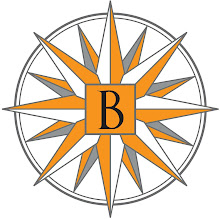 Icebound in Alaska by AJ Fuller, from Jaws Marine.
Icebound in Alaska by AJ Fuller, from Jaws Marine.Look what we found while researching the lost lighthouse at Point Hope, Alaska--more than 100 miles north of the Arctic Circle and one of the oldest continuously inhabited sites in North America.
From the New York Times, Sept. 14, 1898:
THE BEAR SAVES WHALERS
Revenue Cutter Rescues 116 Men from the Vessels
Crushed Off Point Barrow.
CAUGHT IN THE ICE FLOES
Government Vessel Unable to Move Through the Frozen Seas
for Thirteen Days—On Her Way South.
Revenue Cutter Rescues 116 Men from the Vessels
Crushed Off Point Barrow.
CAUGHT IN THE ICE FLOES
Government Vessel Unable to Move Through the Frozen Seas
for Thirteen Days—On Her Way South.
ST. MICHAEL, Aug. 26.—The revenue cutter Bear arrived in port this afternoon with 116 whalers belonging to vessels of the fleet that was crushed in the ice pack while in Winter quarters off Point Barrow on July 28, the first vessel of the season to arrive. She found the surviving members of the steamers Orca and Jessie H. Freeman and the schooner Rosario, and took them on board, giving them the first full meal they had enjoyed in many days.
The rescuing party found that provisions on the Belvidere, Newport, Jeannette, and Fearless, the vessels which escaped destruction in the ice floes, were getting low. Each vessel was supplied with sufficient until the arrival of tenders from the South.
On Aug. 17, having fulfilled her mission of rescue and relief, the Bear started South on her journey to St. Michael with the 116 whalers whose ships were lost. Shortly after her arrival at Point Barrow the Bear was caught in the ice, and the pressure was so tremendous that some of her planks started, and preparations were made for abandoning the ship. Fortunately the pressure subsided, but the Bear was unable to free herself from the pack for thirteen days after first being pinched.
The Bear left St. Michael for the north on July 5, to rescue nine miners whose boat, a large steam launch, had been wrecked five miles south of Cape Ramanoff, while making the trip from Rampart City, on the Yukon River, to St. Michael, for provisions and supplies. All the miners were saved and the Bear proceeded on her way to Point Barrow. On the way several stops were made, and bills contracted by Lieut. Jarvis of the overland relief expedition were paid in goods wanted by the natives. At Point Hope, Lieut. Bertholf reported that the thirty-four reindeer which had strayed from the Laps’ herd while crossing Kotzebue Sound on the way to Point Barrow, had been brought back to Point Hope, and, although several had been killed for food, the herd had increased by the birth of fawns to forty-nine.
Capt. Sherman of the wrecked whaler Orca boarded the Bear at Point Day. He reported the wreck of the Rosario and the serious condition of the Belvidere. It being impossible for the Bear to pass the ice barrier, food was sent to the Belvidere’s men by a native in skin boats in charge of Lieut. Hamlet, who successfully accomplished his mission and reached Point Barrow only eighteen hours after the Bear’s arrival there.
The Newport, Fearless, and Jeannette arrived before Aug. 3, when the Bear became fast in the ice, where she remained for thirteen days, it being found impossible to blast her way out. Stores were, however, transferred to the whalers on sleds. Finally, on Aug. 17, the Bear got loose from the ice, and with the rescued whalers started on her way south. A stop was made at Point Hope on the 20th, where the schooner Louise J. Kinney was found on the beach, where she had been wrecked the day before. Her officers and crew were taken on board. After making several stops the Bear arrived at St. Michael on Aug. 25 and left on the following day.





No comments:
Post a Comment